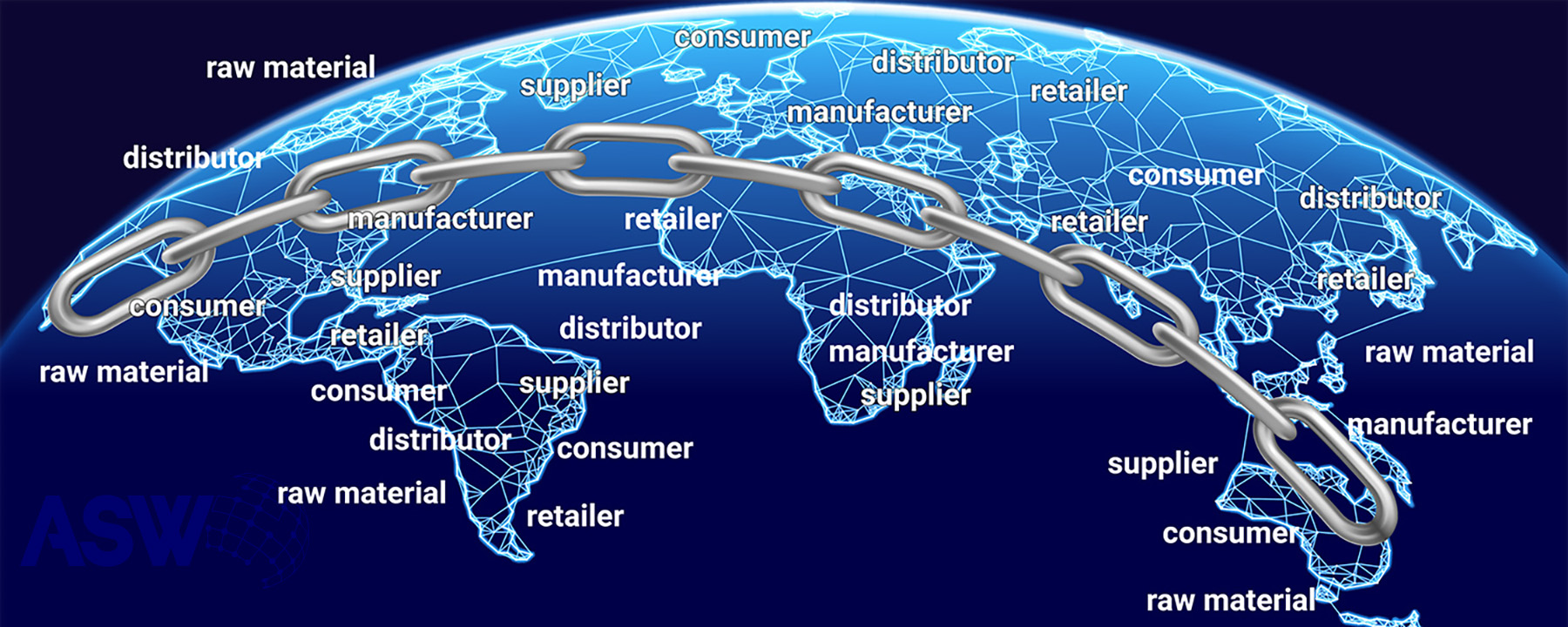
For the general public, awareness about and interest in the term supply chain grew during the pandemic. A lot of people were not aware of the term or had little understanding about what it meant. Of course, even now, most people outside of procurement and operations do not understand the complexity of supply chains. As a supply chain management company, ASW has successfully analyzed, consulted on, and coordinated the supply chains for numerous clients throughout our more than 40-year history. So what is effective supply chain management and how can it make a difference for your company?
In essence, supply chain management is overseeing the movement of goods or services from suppliers to end customers, whether raw materials, finished products, or intangibles. Effective supply chain management is putting the processes in place to ensure that this movement of goods or services takes place in the most efficient, reliable, and cost-effective manner. Often involving multiple suppliers, various materials, and movement between significant distances, supply chain management can be a complex process. The amount of raw materials (or data or labor for services) required; the number of suppliers needed from whom to source those materials; where the materials and suppliers are located; the amount of refinement that needs to occur to the raw material; and where the material needs to be stored, finished, and distributed all affect how complex the supply chain can become.
As operations grow larger, specialized supply chain management can make the difference between a failing business and a thriving one. A business will need to understand and evaluate its supply chain to identify efficiencies and areas for improvement. A good way to start this process is for a business to map out the supply chain for one of its top or most important products or services. After mapping one product or service, the business can proceed with the others it offers. Supply chain mapping is a proactive way to achieving effective supply chain management, which involves the following 4 core components.
1. Strategic Planning & Sourcing
This entails gathering and using data to better understand current and projected trends related to the products or services a company provides, the suppliers that enable the company to provide those products or services, and the customers that the company serves. Forecasting (demand, supply, and price) helps businesses make decisions regarding what customers want, how much of a product or service is needed, when it is needed, and how much it might cost at a particular time. Supplier analysis provides critical information as to what suppliers are available and which ones are able to reliably provide the high-quality materials that the business needs. It also identifies where these suppliers are located in order to determine the most efficient ways to move their materials through the supply chain.
2. Material Handling Optimization
This involves improving the process of how product is received, inventoried, handled, and stored (whether raw materials, semi-finished goods, or finished product), along with how orders are fulfilled, packaged, and distributed. Multiple facilities may store product in various stages and coordination needs to take place ensure that materials are sent and received on time and inventoried, handled, and warehoused properly until they are needed. Goods may need to be assembled, dissembled, finished, kitted, packaged in a special way, etc., and each process needs to be carefully monitored and documented. Then goods need to be picked, packed, and shipped to the next stage safely and efficiently.
3. Risk Management
This necessitates identifying and evaluating potential risks, threats, or disruptions to the business and developing a plan to mitigate them. It is an ongoing process and is meant to be a proactive approach that will prepare a business to navigate through any future supply chain disruptions. Effectively managing risks will make a business more resilient, competitive, and responsive to customer needs.
4. Continuous Improvement
This requires creating key performance indicators (KPI's), reviewing operational processes, and ensuring that they are as productive and cost effective as possible to achieve the company’s optimal goals, conform to or surpass established standards, and meet or exceed customer expectations. It includes ensuring visibility with suppliers, the company’s inventory, and the shipment of products / delivery of services to customers; providing value-added services; establishing a robust and effective returns management system; and implementing metrics to consistently evaluate performance and improve upon processes.
Supply chain management can be an internal process or it can be outsourced, in part or in totality, to a third-party logistics provider (3PL). Outsourcing supply chain management can involve consultation with a third party, or it can involve delegating the coordination to one or more 3PL partners. Whether managing internally or outsourcing, it is important that businesses devote the proper resources to establishing and maintaining strong and effective oversight over their supply chains.
If you are considering outsourcing supply chain management to a 3PL, contact ASW.
